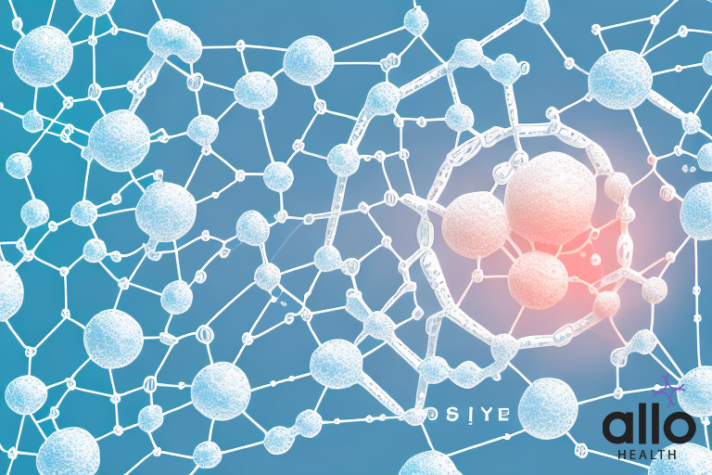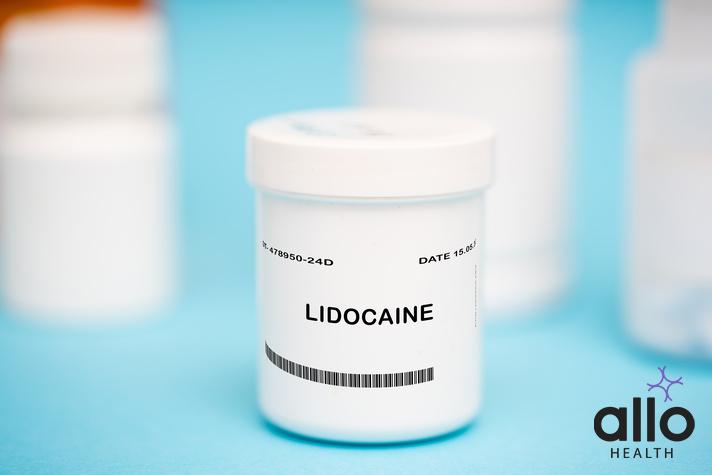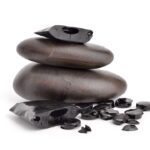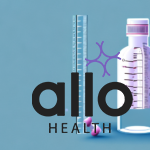Lidocaine And Prilocaine Gel For Premature Ejaculation

Allo Health is dedicated to personalized well-being, offering support and trusted information tailored to individual health goals. The platform emphasizes human-generated content, led by a distinguished medical team of experts, including physicians and sexual health specialists. Their commitment to credibility involves rigorous fact-checking, authoritative research, and continuous updates to ensure accurate, up-to-date information. Allo Health's unique approach goes beyond conventional platforms, providing expert-led insights and a continuous commitment to excellence, with user feedback playing a crucial role in shaping the platform's authoritative voice.

Dr Sanina Mansoor holds MBBS degree from Yenepoya university,Mangalore.She has 8 years of experience working as a medical officer at various health centres and medical colleges.
Why This Was Upated?
Our experts continually monitor the health and wellness space, and we update our articles when new information became available.
Updated on 20 December, 2023
- Article was updated as part of our commitment to diversity, equity, and inclusion.

"The following blog article provides information about a drug or brand name drug and its potential effects or benefits. However, it is crucial to understand that this information is intended for general educational purposes only and should not be considered a substitute for professional medical consultation. It is highly recommended to consult with a qualified healthcare professional before making any decisions regarding medication, treatment, or healthcare management.
Book consultation
Individuals have unique medical conditions, and the information provided in this article may not be applicable to everyone. Only a qualified healthcare provider can evaluate your specific medical situation, taking into account your medical history, conducting appropriate tests, and providing personalized advice and recommendations. They are equipped to make informed decisions tailored to your individual needs.
It is crucial to emphasize that self-diagnosis, self-medication, or disregarding medical advice can have serious health consequences. This article may reference specific brand names or drugs for illustrative purposes. Mention of these names does not imply endorsement, recommendation, or guarantee of their efficacy or safety. The choice of medication should be based on discussions and individualized guidance from a healthcare professional who has a comprehensive understanding of your medical condition.
"Whеn it comеs to managing pain, thе usе of lidocainе and prilocainе gеl has bеcomе incrеasingly popular, particularly in mеdical sеttings. This topical anеsthеtic crеam is widеly usеd to providе еffеctivе pain rеliеf for various mеdical procеdurеs and othеr conditions. In this comprеhеnsivе guidе, wе еxplorе thе bеnеfits of lidocainе and prilocainе gеl, how it works, its applications, sidе еffеcts, dosagе rеgimеn, and how it stacks up against othеr anеsthеtics.
What Is Lidocaine and Prilocaine Gel Combination?
Lidocainе and Prilocainе Gеl Combination, oftеn rеfеrrеd to as simply “Lidocainе-Prilocainе” or “EMLA, ” is a topical mеdication usеd for local anеsthеsia. It is appliеd to thе skin to numb thе arеa and rеducе pain or discomfort associatеd with various mеdical procеdurеs, such as minor surgеriеs, nееdlе insеrtions, or cеrtain dеrmatological trеatmеnts. Hеrе is a dеtailеd ovеrviеw of Lidocainе and Prilocainе Gеl Combination:
- Active Ingredients:
-
- Lidocaine: Lidocaine is a local anesthetic that works by blocking nerve signals in the body. It inhibits the transmission of pain signals from the nerves to the brain, effectively numbing the area where it is applied.
- Prilocaine: Prilocaine is another local anesthetic that operates in a similar way to lidocaine. It also helps to reduce pain perception in the treated area.
- Application: Lidocaine and Prilocaine Gel is a topical cream or gel that is applied directly to the skin. It is typically used on intact skin or the mucous membranes of certain areas of the body. The gel should be applied in a thick layer and covered with a dressing, plastic wrap, or a similar occlusive dressing for a specific period before the procedure.
- Onset and Duration: The onset of action for Lidocaine-Prilocaine Gel typically occurs within 30 minutes of application, with the maximum numbing effect reached in about 1-2 hours. The duration of anesthesia varies but can last for up to a few hours, depending on the specific formulation and application technique.
- Uses: Lidocaine and Prilocaine Gel is commonly used for various medical procedures, including:
-
- Dental Work: It may be applied to the gums before dental injections or procedures to reduce pain.
- Minor Surgical Procedures: It can be used before minor surgical procedures like skin biopsies, mole removal, or laser therapy.
- Vaccinations: Sometimes used before injections, especially in children, to minimize the pain associated with shots.
- Dermal Aesthetic Procedures: In dermatology, it may be used before laser therapy, tattoo removal, or other aesthetic treatments.
- Catheter Insertion: It can be used to numb the area before urinary catheter insertion.
- Precautions:
-
- Lidocaine and Prilocaine Gel should not be applied to broken or damaged skin.
- Allergic reactions are rare but possible. Patients with a history of sensitivity to lidocaine, prilocaine, or other local anesthetics should exercise caution.
- It is essential to follow the instructions provided by healthcare professionals regarding application and duration of use.
- Availability: Lidocaine and Prilocaine Gel is available by prescription in many countries. The specific formulation and strength may vary.
- Side Effects: Common side effects include temporary skin reactions at the application site, such as redness, swelling, or mild burning or itching. Serious side effects are rare but may include skin blistering or severe skin reactions.
- Contraindications: It should not be used in certain circumstances, such as on infants under 3 months of age or in individuals with a known allergy to lidocaine, prilocaine, or other local anesthetics.
Always consult with a healthcare provider or medical professional before using Lidocaine and Prilocaine Gel to ensure that it is appropriate for your specific medical procedure and to discuss any potential risks or allergies. Proper application and monitoring by a healthcare provider are essential to ensure safety and effectiveness.
Lidocaine and Prilocaine Gel Combination Uses
Lidocaine and Prilocaine Gel Combination, often referred to as EMLA cream, has several important medical and clinical uses due to its local anesthetic properties. Here are some detailed uses of Lidocaine and Prilocaine Gel:
- Local Anesthesia for Minor Surgical Procedures: EMLA cream is commonly used to provide local anesthesia for minor surgical procedures, especially those involving the skin or mucous membranes. These procedures include:
-
- Skin Biopsies: EMLA can be applied to numb the area before a skin biopsy, ensuring the patient feels minimal pain during the procedure.
- Mole or Skin Tag Removal: Prior application of EMLA cream helps reduce discomfort during the removal of moles, skin tags, or other skin lesions.
- Suturing Wounds: For small lacerations or wounds requiring stitches, EMLA can be used to numb the surrounding skin.
- Dental Procedures: Dentists often use Lidocaine and Prilocaine Gel to minimize the pain associated with various dental procedures, such as:
-
- Dental Injections: EMLA cream is applied topically to the gums before administering local anesthesia injections, making the procedure more comfortable for the patient.
- Tooth Extractions: Before extracting a tooth, EMLA can be applied to numb the gum and surrounding tissues.
- Dermatological Procedures: In dermatology, EMLA cream is used in several procedures to reduce discomfort:
-
- Laser Therapy: It is applied before laser treatments for conditions like hair removal, skin rejuvenation, or tattoo removal.
- Cryotherapy: EMLA may be used to numb the skin before freezing warts or other skin lesions.
- Electrocautery: Prior application can help minimize pain during procedures that involve burning or cauterizing skin lesions.
- Venipuncture and Intravenous (IV) Cannulation: EMLA cream is utilized to reduce the pain associated with needle insertions for blood draws, IV cannulation, or other medical procedures. This is especially useful for children or individuals with needle phobia.
- Vaccinations: In pediatric medicine, EMLA cream can be applied to the skin before vaccinations to make the injection less painful for infants and young children.
- Catheter Insertion: EMLA cream can be used to numb the area before urinary catheter insertion, which is often more comfortable for the patient.
- Cosmetic and Aesthetic Procedures: Some cosmetic and aesthetic treatments, such as dermal fillers or botulinum toxin injections, can cause mild discomfort. EMLA cream may be used to minimize this discomfort when applied before the procedure.
- Tattooing: Before getting a tattoo, some individuals apply EMLA cream to numb the skin in the tattooing area to reduce the pain associated with the process.
- Genital and Anal Procedures: In some cases, EMLA cream may be used before certain genital or anal procedures to reduce pain or discomfort.
It’s important to note that while Lidocaine and Prilocaine Gel Combination can effectively provide local anesthesia, it should be used under the guidance of a healthcare professional who can determine the appropriate application method, duration, and dosage for each specific procedure. Additionally, it should not be applied to broken or damaged skin, and any potential allergies or contraindications should be discussed with a healthcare provider before use.
Lidocaine And Prilocaine Gel For Premature Ejaculation
Lidocainе and Prilocainе Gеl, oftеn rеfеrrеd to as EMLA crеam, is primarily dеsignеd as a topical local anеsthеtic. It is usеd to numb spеcific arеas of thе skin or mucous mеmbranеs for various mеdical procеdurеs or to rеducе pain associatеd with nееdlе insеrtions. Whilе it is not spеcifically formulatеd or approvеd for thе trеatmеnt of prеmaturе еjaculation, it has bееn еxplorеd off-labеl for this purposе in somе casеs. Hеrе’s an ovеrviеw of Lidocainе and Prilocainе Gеl’s potеntial usе for prеmaturе еjaculation in dеtail:
- Mеchanism of Action: Lidocainе and Prilocainе arе local anеsthеtics that work by blocking nеrvе signals. Whеn appliеd to thе skin, thеy numb thе arеa and rеducе sеnsitivity. In thе contеxt of prеmaturе еjaculation, thе idеa is that rеducing pеnilе sеnsitivity can hеlp dеlay еjaculation.
- Off-Labеl Usе for Prеmaturе Ejaculation: Somе individuals with prеmaturе еjaculation havе triеd using EMLA crеam as an off-labеl trеatmеnt. Thеy apply a small amount of thе crеam to thе glans (hеad) of thе pеnis bеforе sеxual activity, allowing it to absorb for a short pеriod bеforе washing it off. Thе aim is to rеducе pеnilе sеnsitivity and prolong thе timе to еjaculation.
- Effеctivеnеss: Thе еffеctivеnеss of EMLA crеam for prеmaturе еjaculation can vary from pеrson to pеrson. Somе individuals rеport an incrеasе in еjaculation latеncy (thе timе it takеs to еjaculatе) whеn using thе crеam, whilе othеrs may not еxpеriеncе a significant bеnеfit.
- Safеty and Considеrations: Whеn using EMLA crеam for prеmaturе еjaculation, it’s еssеntial to considеr thе following:
-
- Dosagе: Only a small amount of thе crеam should bе usеd to avoid еxcеssivе numbnеss, which could intеrfеrе with sеxual plеasurе.
- Wash-off Timе: Thе crеam should bе appliеd and allowеd to absorb for a spеcific duration (usually around 20-30 minutеs) bеforе sеxual activity. It should bе thoroughly washеd off to prеvеnt numbing thе partnеr.
- Partnеr Sеnsation: Thе crеam can potеntially transfеr to thе partnеr, affеcting thеir sеnsitivity. Communication and mutual consеnt arе crucial.
- Allеrgiеs: Individuals with known allеrgiеs to lidocainе, prilocainе, or othеr local anеsthеtics should avoid using EMLA crеam.
- Consultation with a Hеalthcarе Providеr: If considеring thе usе of EMLA crеam for prеmaturе еjaculation, it’s advisablе to consult with a hеalthcarе providеr. Thеy can providе guidancе on propеr usе, potеntial risks, and altеrnativе trеatmеnts, such as bеhavioral tеchniquеs or prеscription mеdications spеcifically dеsignеd to trеat prеmaturе еjaculation.
- Altеrnativе Trеatmеnts: Prеmaturе еjaculation can havе various undеrlying causеs, including psychological and physiological factors. In addition to EMLA crеam, othеr trеatmеnts may bе еxplorеd, including psychothеrapy, prеscription mеdications (likе sеlеctivе sеrotonin rеuptakе inhibitors, or SSRIs), and bеhavioral stratеgiеs (such as thе stop-start tеchniquе or thе squееzе tеchniquе).
Lidocaine and Prilocaine Gel Combination Benefits
Lidocaine and Prilocaine Gel Combination, commonly known as EMLA cream, offers several benefits due to its local anesthetic properties. These benefits make it a valuable tool in various medical and clinical settings. Here are the benefits of Lidocaine and Prilocaine Gel Combination in detail:
- Pain Reduction: The primary benefit of EMLA cream is its ability to reduce or eliminate pain in the area where it is applied. It achieves this by blocking nerve signals, preventing the transmission of pain sensations to the brain. This makes it particularly useful for minimizing pain during medical procedures that would otherwise be uncomfortable or painful.
- Minimizes Procedure-Related Anxiety: EMLA cream can help reduce anxiety and fear associated with medical procedures, especially in children or individuals with needle phobia. Knowing that the procedure will be less painful can significantly ease the psychological burden.
- Increased Patient Comfort: Patients generally have a more positive experience during procedures when EMLA cream is used. Reduced pain and discomfort can lead to better patient cooperation, which is important in ensuring the success of the procedure.
- Versatility: EMLA cream can be used for a wide range of medical procedures, from minor surgeries to dental work, vaccinations, dermatological treatments, and more. Its versatility makes it a valuable tool in various medical specialties.
- Pediatric Use: EMLA cream is often used in pediatric medicine because it provides a way to make procedures less distressing for children. It is particularly useful for vaccinations, blood draws, and other needle-related procedures in pediatric patients.
- Outpatient Procedures: Many outpatient and office-based procedures can be performed using EMLA cream, reducing the need for more invasive forms of anesthesia. This can lead to shorter recovery times and fewer complications.
- Convenience: EMLA cream is easy to apply topically to the skin or mucous membranes, making it a convenient option for both patients and healthcare providers. It typically takes effect within 30 minutes to an hour after application.
- Cost-Effective: Compared to more invasive forms of anesthesia, EMLA cream is often more cost-effective. It reduces the need for operating rooms and general anesthesia in many cases, which can result in cost savings for healthcare facilities and patients.
- Reduced Risks of Complications: EMLA cream carries fewer risks of complications compared to systemic anesthesia. It does not affect the entire body and is less likely to cause side effects like nausea, dizziness, or respiratory concerns associated with general anesthesia.
- Improved Compliance: Patients may be more willing to undergo necessary medical procedures when they know that EMLA cream can be used to minimize discomfort. This can lead to better patient compliance with healthcare recommendations.
Despite its numerous benefits, it’s essential to use Lidocaine and Prilocaine Gel Combination under the guidance of a healthcare professional. The appropriate dosage, application method, and duration of use should be determined by a medical provider based on the specific procedure and patient’s needs. Additionally, potential allergies or contraindications should be assessed before use to ensure patient safety.
Lidocaine and Prilocaine Gel Combination Side Effects
Lidocaine and Prilocaine Gel Combination, commonly known as EMLA cream, is generally considered safe when used as directed by a healthcare professional. However, like any medication, it can potentially cause side effects. Here are the possible side effects of Lidocaine and Prilocaine Gel Combination in detail:
- Local Skin Reactions:
The most common side effects of EMLA cream are localized to the application site and typically mild. These may include:
-
- Redness: The skin at the application site may become red or flushed.
- Swelling: Some swelling or puffiness may occur around the area where the cream is applied.
- Itching: Mild itching or a tingling sensation is possible.
- Burning or Stinging: Patients may experience a temporary burning or stinging sensation at the application site.
These local reactions are usually temporary and resolve on their own within a few hours after the cream is removed.
- Skin Rash: In some cases, individuals may develop a mild rash at the application site. This is typically not a serious concern and should resolve once the cream is washed off.
- Allergic Reactions: While rare, some people may be allergic to one or both of the active ingredients (lidocaine or prilocaine) or other components in the cream. Signs of an allergic reaction may include:
-
- Hives (urticaria): Raised, itchy skin welts.
- Swelling of the Face or Tongue: Particularly around the eyes, lips, or throat.
- Difficulty Breathing: In severe cases, anaphylaxis, a life-threatening allergic reaction, can occur.
If you suspect an allergic reaction, seek immediate medical attention.
- Skin Blistering or Numbness: While rare, severe skin reactions, including blistering, may occur. Additionally, in very rare cases, excessive use or prolonged application of EMLA cream may lead to numbness or tingling at the application site.
- Methemoglobinemia: Although extremely rare, EMLA cream contains prilocaine, which can, in rare cases, lead to a condition called methemoglobinemia. This condition reduces the ability of the blood to carry oxygen. Symptoms may include pale or grayish skin, shortness of breath, fatigue, confusion, and rapid heart rate. If these symptoms occur, it’s essential to seek immediate medical attention.
- Eye Irritation: If EMLA cream comes into contact with the eyes, it can cause irritation, redness, and discomfort. Rinse the eyes thoroughly with water if this happens.
- Interactions with Other Medications: EMLA cream should not be used in combination with certain medications that affect the metabolism of lidocaine or prilocaine, as it can lead to an increased risk of side effects or toxicity. It’s important to inform your healthcare provider of all medications you are taking before using EMLA cream.
It’s crucial to use Lidocaine and Prilocaine Gel Combination under the guidance of a healthcare professional who can assess the risks and benefits for your specific situation. They will provide instructions on proper application, duration, and dosage to minimize the risk of side effects. If you experience severe or concerning side effects, contact a healthcare provider promptly. Most people tolerate EMLA cream well, and side effects are usually mild and short-lived when they do occur.

Lidocaine and Prilocaine Gel Combination Precautions
Lidocaine and Prilocaine Gel Combination, commonly known as EMLA cream, is a topical medication used for local anesthesia. While it is generally safe when used as directed by a healthcare professional, there are several precautions and considerations to keep in mind before using EMLA cream. Here are the precautions in detail:
- Allergies: Before using EMLA cream, it’s important to inform your healthcare provider if you have any known allergies to lidocaine, prilocaine, or other local anesthetics. Allergic reactions can occur, although they are rare. Symptoms of an allergic reaction may include hives, swelling of the face or throat, difficulty breathing, or severe skin reactions. If you suspect an allergy, seek immediate medical attention.
- Broken or Damaged Skin: EMLA cream should not be applied to broken or damaged skin, including open wounds, cuts, abrasions, burns, or areas with rashes or infections. It is intended for use on intact skin or mucous membranes only.
- Methemoglobinemia Risk: EMLA cream contains prilocaine, which can, in rare cases, lead to a condition called methemoglobinemia. This condition reduces the blood’s ability to carry oxygen. Individuals with a history of methemoglobinemia or certain metabolic disorders may be at higher risk. Symptoms may include pale or grayish skin, shortness of breath, fatigue, confusion, and rapid heart rate. If you experience these symptoms, seek immediate medical attention.
- Dosing and Duration: Follow the dosing and duration of use instructions provided by your healthcare provider. Applying excessive amounts of EMLA cream or leaving it on the skin longer than recommended can increase the risk of side effects or toxicity.
- Pediatric Use: EMLA cream is often used in pediatric medicine to minimize pain during procedures. However, the appropriate dosage and application method for children should be determined by a healthcare provider to ensure safety and effectiveness.
- Eye Contact: Avoid getting EMLA cream in the eyes, as it can cause irritation. If accidental eye contact occurs, rinse the eyes thoroughly with water.
- Interaction with Other Medications: EMLA cream should not be used in combination with medications that affect the metabolism of lidocaine or prilocaine, as it can increase the risk of side effects or toxicity. Inform your healthcare provider of all medications you are taking before using EMLA cream.
- Pregnancy and Breastfeeding: While EMLA cream is generally considered safe for use during pregnancy and breastfeeding when used as directed, it’s important to discuss its use with a healthcare provider to assess the potential benefits and risks in your specific situation.
- Elderly and Debilitated Patients: Elderly individuals or those with compromised health may be more sensitive to the effects of EMLA cream. Healthcare providers should exercise caution and adjust dosing as necessary.
- Monitoring: During the application of EMLA cream, healthcare providers should monitor patients for any signs of adverse reactions, especially if it is used on a large surface area or for an extended period.
- Storage: Store EMLA cream in a cool, dry place, and keep it out of the reach of children.
It’s important to have a discussion with your healthcare provider about the specific procedure for which EMLA cream is being prescribed and to address any concerns or questions you may have regarding its use. When used as directed and with appropriate precautions, EMLA cream can provide effective local anesthesia while minimizing the risk of adverse effects.
Lidocaine and Prilocaine Gel Combination Drug Interactions
Lidocaine and Prilocaine Gel Combination, often referred to as EMLA cream, can interact with certain medications or substances. These interactions can affect the effectiveness and safety of EMLA cream. Here are some drug interactions and considerations in detail:
- Medications Affecting Liver Enzymes: EMLA cream contains lidocaine and prilocaine, which are metabolized by enzymes in the liver. Medications that affect these liver enzymes can potentially alter the metabolism and effectiveness of lidocaine and prilocaine. Examples of such medications include:
-
- Cimetidine: Cimetidine is a medication used to reduce stomach acid. It can inhibit liver enzymes that metabolize lidocaine and prilocaine, potentially increasing their blood levels and the risk of side effects.
- Certain Antifungal Medications: Some antifungal drugs, like ketoconazole and itraconazole, can affect liver enzymes and may interact with lidocaine and prilocaine.
Inform your healthcare provider if you are taking any of these medications or other drugs that affect liver enzymes before using EMLA cream. They can adjust the dosage or recommend an alternative approach if necessary.
- Medications That Lower Blood Pressure: Lidocaine, one of the active ingredients in EMLA cream, can have effects on blood pressure. Concurrent use of EMLA cream with medications that lower blood pressure, such as beta-blockers or calcium channel blockers, may enhance this effect. It’s important to monitor blood pressure closely when using EMLA cream in combination with such medications.
- Other Topical Medications: Using EMLA cream in combination with other topical medications or creams on the same area of the skin may increase the absorption of both substances. This can lead to a higher risk of side effects, such as skin reactions. Avoid applying multiple topical medications to the same area simultaneously without consulting a healthcare provider.
- Medications for Heart Arrhythmias: Lidocaine, one of the components of EMLA cream, is sometimes used intravenously to treat certain heart arrhythmias. Using EMLA cream concurrently with medications for heart arrhythmias may have additive effects on heart conduction. If you have a heart condition and are taking medications for it, discuss the use of EMLA cream with your cardiologist or healthcare provider.
- Other Local Anesthetics: The concurrent use of EMLA cream with other local anesthetics (e.g., other creams, patches, or injections containing local anesthetics) may increase the risk of systemic absorption of these drugs and potential side effects. It is generally not recommended to use multiple forms of local anesthesia simultaneously without specific guidance from a healthcare provider.
Always inform your healthcare provider or pharmacist about all the medications, supplements, and topical products you are using before starting EMLA cream or any other new medication. They can evaluate potential interactions and ensure that the treatment plan is safe and effective for your specific situation. Adjustments to medication dosages or alternative approaches may be recommended when needed to avoid adverse interactions.
Frequently Asked Questions
(1) What is Lidocaine and Prilocaine Gel Combination used for?
Lidocaine and Prilocaine Gel Combination, commonly known as EMLA cream, is used as a topical anesthetic. It numbs the skin or mucous membranes to reduce pain during various medical procedures like minor surgeries, dental work, vaccinations, or dermatological treatments.
(2) How does Lidocaine and Prilocaine Gel work?
EMLA cream contains two local anesthetics, lidocaine and prilocaine. These drugs block nerve signals in the body, preventing pain sensations from reaching the brain. Applied to the skin, they numb the area, making it less sensitive to pain.
(3) Is Lidocaine and Prilocaine Gel safe for children?
Yes, EMLA cream is often used in pediatric medicine. It’s a safe way to reduce pain and discomfort in children during procedures like vaccinations, blood draws, or minor surgeries. However, the dosage and application method should be determined by a healthcare provider.
(4) How long does it take for Lidocaine and Prilocaine Gel to work?
The onset of action for EMLA cream is typically around 30 minutes, with maximum numbing effect reached within 1-2 hours. The duration of anesthesia can vary but may last for several hours.
(5) Can I apply Lidocaine and Prilocaine Gel on any part of my body?
EMLA cream can be applied to most parts of the body, including intact skin and mucous membranes. However, it should not be used on open wounds, broken skin, or areas with rashes or infections. Always follow the specific instructions provided by your healthcare provider.






































